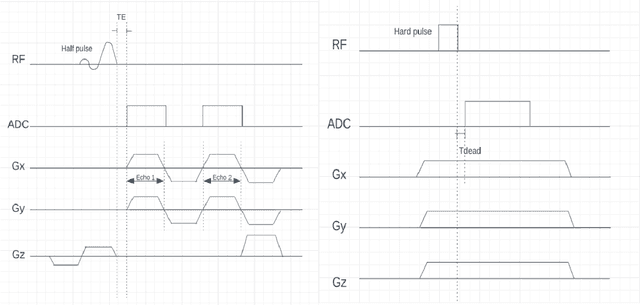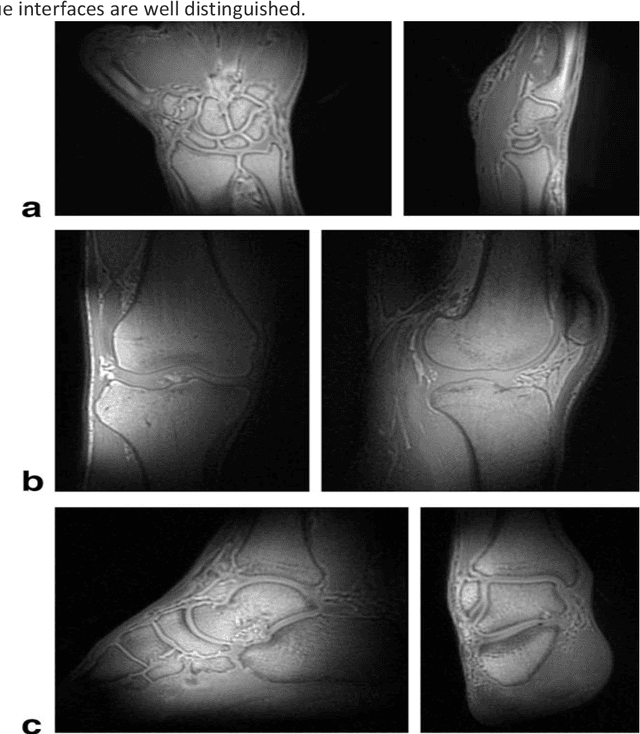Soham Sharad More
The UTE and ZTE Sequences at Ultra-High Magnetic Field Strengths: A Survey
Oct 07, 2022



Abstract:UTE (Ultrashort Echo Time) and ZTE (Zero Echo Time) sequences have been developed to detect short T2 relaxation signals coming from regions that are unable to be detected by conventional MRI methods. Due to the high dipole-dipole interactions in solid and semi-solid tissues, the echo time generated is simply not enough to produce a signal using conventional imaging method, often leading to void signal coming from the discussed areas. By the application of these techniques, solid and semi-solid areas can be imaged which can have a profound impact in clinical imaging. High and Ultra-high field strength (UHF) provides a vital advantage in providing better sensitivity and specificity of MR imaging. When coupled with the UTE and ZTE sequences, the image can recover void signals as well as a much-improved signal quality. To further this strategy, secondary data from various research tools was obtained to further validate the research while addressing the drawbacks to this approach. It was found that UTE and ZTE sequences coupled with some techniques such as qualitative imaging and new trajectories are very crucial for accurate image depiction of the areas of the musculoskeletal system, neural system, lung imaging and dental imaging.
 Add to Chrome
Add to Chrome Add to Firefox
Add to Firefox Add to Edge
Add to Edge